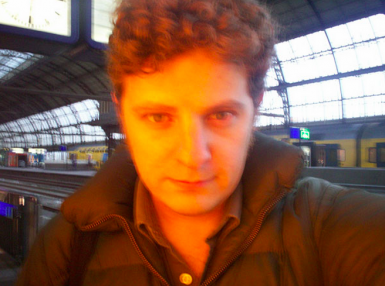Similar to a jazz musician who translates into music sensations elicited by the atmosphere that surrounds him, Nicolás Testoni materializes, with his industrial and maritime images, the reality and life experiences of the population of Bahía Blanca, in the south of Argentina—more specifically of the inhabitants who made or make a living working at the port of Ingeniero White.
The musical comparison is not a random one. “I work like the musicians who used to play along with silent movies on the piano. Where the pianist would place notes, however, I place images,” says the artist. He is referring to works such as Canto de aves pampeanas, awarded at the 16th International Electronic Art Festival SESC_Videobrasil (2007), in which he shows present-day landscapes as a complement to audio from an old documentary of which only the sound remained. Or to S/T (White Noise), which gathers together homemade Super-8 images of a friend’s childhood experiences, to the overwhelming sound recording of daily life in Ingeniero White, impregnated with machinery that never rests.
Like a good jazz musician, the Argentine prefers to depart from traditional lines, destabilize genre-related expectations, and create his own language. He improvises after conducting intense field investigation, during which he seeks to understand and apprehend memories, world views, and survival strategies devised amidst the fast-paced changes that turned the resort into a petrochemical hub.
In a spatially limited universe, he finds myriad experiences linked to working at the port, the hub, and the city’s railway system, which attest to the “stealthy ability, the faculty of operating with scraps so as to establish unexpected combinations among them,” as he describes. Documentary film and video art converge, in a creative process that ends up turning characters into protagonists—in front of the cameras and behind them—not only of his history, but also of the way in which he decides to tell it.
“The work of Nicolás Testoni translates, in a contemporary form, some of the tensions of memory, of the modes of archiving, of the dilutions of audiovisual formats and genres, showing us some of the paths trodden by electronic image in our time, in its confrontations with social life,” assesses critic and curator Eduardo de Jesus, author of the Essay on Testoni.
Further info on this artist available at the collection
